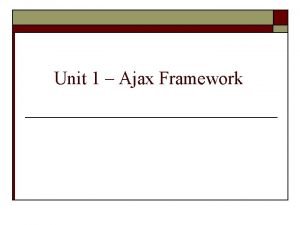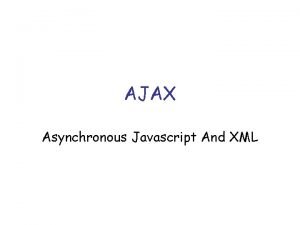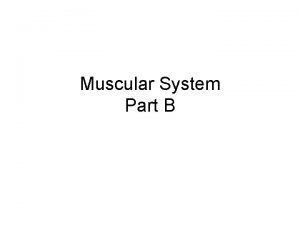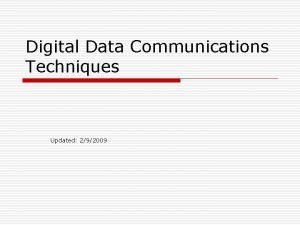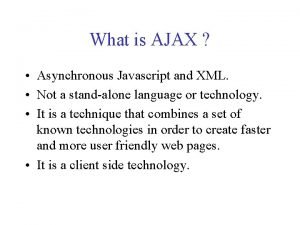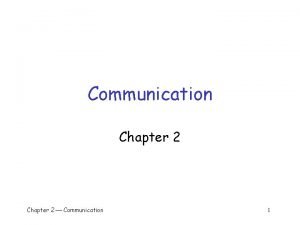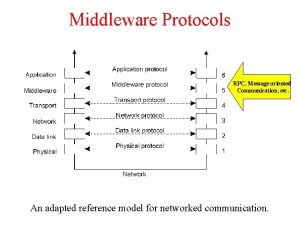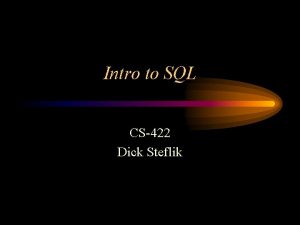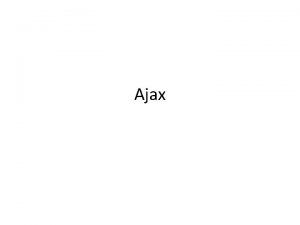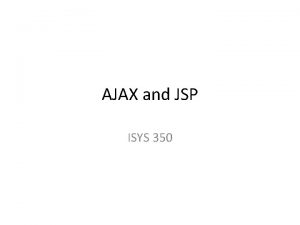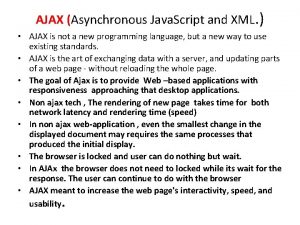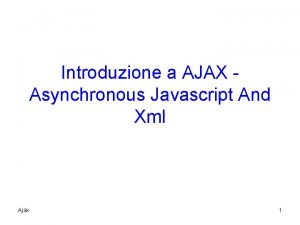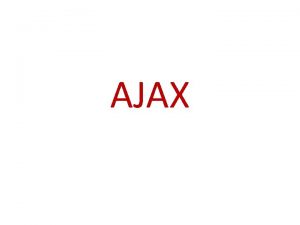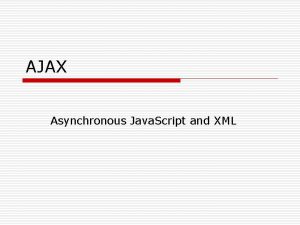AJAX CS422 Dick Steflik What is AJAX Asynchronous












- Slides: 12

AJAX CS-422 Dick Steflik

What is AJAX • Asynchronous Javascript And XML – allows the updating of a web page without doing a page reload • creates much nicer user experience • AJAX is not really a technology by itself – combination of Javascript, XML and some server-side scripting to create the XML • server-side scripting could be done in PHP, . NET, Java Servlet or Java Server Page (JSP)

General Technique Server-side Web Page Script requests server-side script to be run info parsed from XML and used to update DOM by Javascript run, XML created XML document returned

Sending a request for a URL • xml. Http. Request Object – mozilla • obj. XMLHttp=new XMLHttp. Request() – IE • obj. XMLHttp=new Active. XObject("Microsoft. XMLHTTP") • create the URL • tell the browser the name of the function to handle the response • send the url to the server

example var url="servertime. php" xml. Http. onreadystatechange=state. Changed xml. Http. open("GET", url, true) xml. Http. send(null)

The server-side script • creates a “well formed XML document” • sets the content type to text/xml • can be written in any language – PHP – ASP –. NET – Java – JSP

sample PHP script <? // a time document header("Content-type: text/xml"); print("<time>"); print("<currtime>". time(). "</currtime>"); print("</time>"); ? >

state. Change • when the document is received by the browser control is transferred to where ever we told it to – xml. Http. onreadystatechange=state. Changed – in this case the function named state. Changed

state. Changed function state. Changed() { if (xml. Http. ready. State==4 || xml. Http. ready. State=="complete") { //update the DOM with the data document. get. Element. By. Id("time"). inner. HTML=xml. Http. response. Text } }

XMLHttp. Request Object • Methods: – abort() - stop the current request – get. All. Response. Headers - Returns complete set of headers (labels and values) as a string – get. Response. Header(: header. Label”) – returns the string value of the requested header field – open(“method”, ”URL”) sets a pending request – send(content) – transmits the request – set. Request. Header(“label”, ”value”) – sets label/value in the header

(continued) • Properties – onreadystatechange - event handler to use – ready. State (0 -uninitialized, 1 -loading, 2 -loaded, 3 interactive, 4 - complete) – response. Text – string version of the data returned – response. XML – DOM compatible document object returned by server – status – http response header code (200 – good) – status. Text – string message of status code

Popular Ajax Frameworks • Prototype – http: //www. prototypejs. org/ – free • Script. aculo. us – http: //script. aculo. us/ – Used with the Prototype Framework, mainly for animations and interface development – free • Backbase – Enterprise Ajax Framework – not free
 Ajax
Ajax Ajax asynchronous javascript and xml
Ajax asynchronous javascript and xml Mathew garber
Mathew garber Smooth muscle gap junctions
Smooth muscle gap junctions Timing error in asynchronous transmission
Timing error in asynchronous transmission Asynchronous transfer mode history
Asynchronous transfer mode history Asynchronous javascript and xml
Asynchronous javascript and xml Advantages of asynchronous transfer mode
Advantages of asynchronous transfer mode Asynchronous
Asynchronous Persistent and transient communication
Persistent and transient communication Pembelajaran synchronous dan asynchronous
Pembelajaran synchronous dan asynchronous Asynchronous rpc
Asynchronous rpc Asynchronous trigger sql server
Asynchronous trigger sql server
